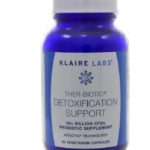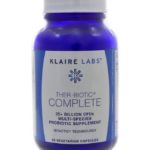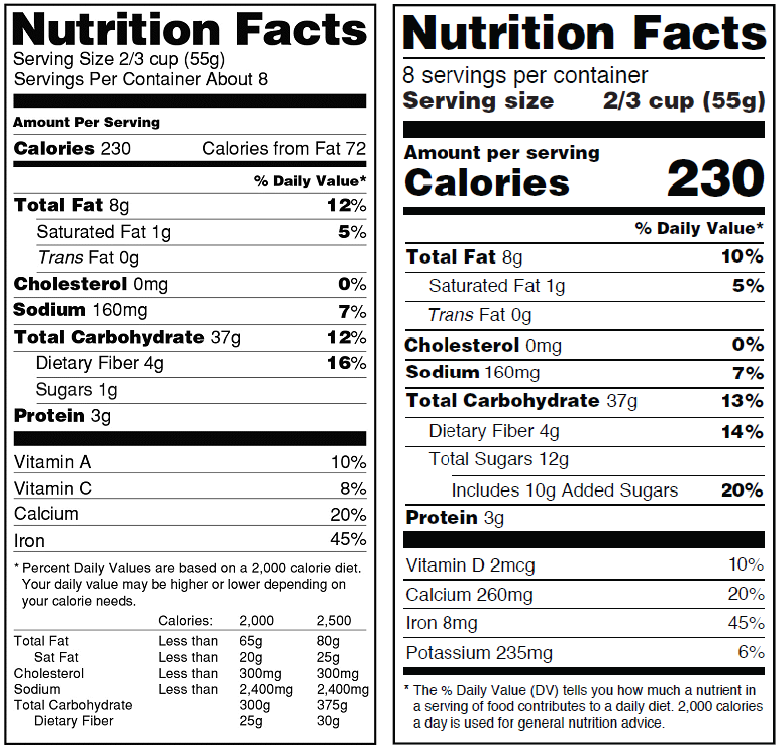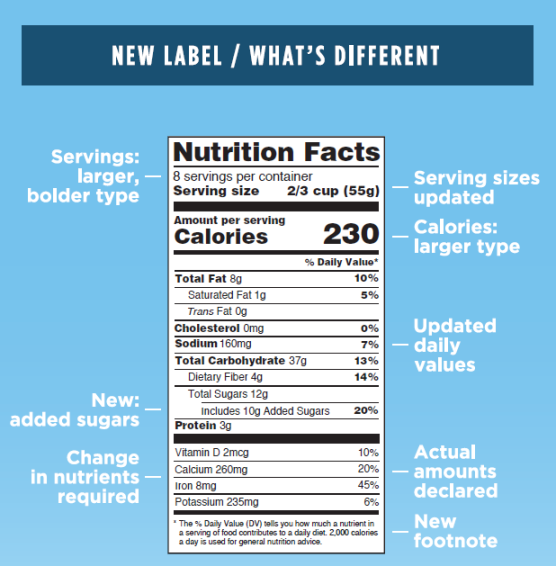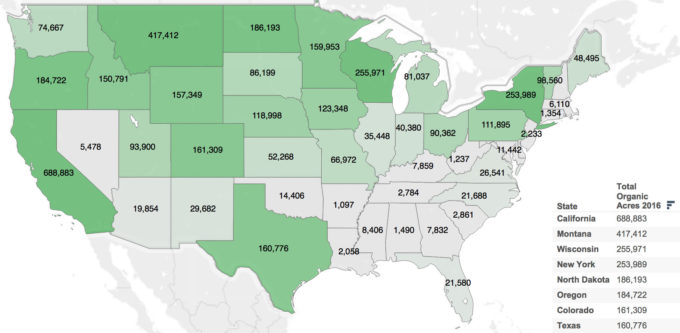by Dr. Amy MyersApril 4, 2013
You might be wondering: What on earth is candida?
Candida is a fungus, which is a form of yeast, and a very small amount of it lives in your mouth and intestines. Its main job? Helping out with digestion and nutrient absorption.
But when overproduced, candida can break down the wall of the intestine and penetrate the bloodstream — releasing toxic by-products into your body and causing leaky gut. This can lead to many different health problems, from digestive issues to depression.
How do you get candida overgrowth?
The good news is that the healthy bacteria in your gut typically keep your candida levels in check. However, a few factors can cause the candida population to grow out of control:
Eating a diet high in refined carbohydrates and sugar
Consuming a lot of alcohol
Taking oral contraceptives
Eating a diet high in beneficial fermented foods (like Kombucha, sauerkraut, and pickles)
Living a high-stress lifestyle
Taking a round of antibiotics that killed too many of those friendly bacteria
What are common symptoms of candida?
Skin and nail fungal infections, such as athlete’s foot or toenail fungus
Feeling tired and worn down, or suffering from chronic fatigue or fibromyalgia
Digestive issues such as bloating, constipation, or diarrhea
Autoimmune diseases such as Hashimoto’s thyroiditis, rheumatoid arthritis, ulcerative colitis, lupus, psoriasis, scleroderma, or multiple sclerosis
Difficulty concentrating, poor memory, lack of focus, ADD, ADHD, and brain fog
Skin issues like eczema, psoriasis, hives, and rashes
Irritability, mood swings, anxiety, or depression
Vaginal infections, urinary tract infections, rectal itching, or vaginal itching
Severe seasonal allergies or itchy ears
Strong sugar and refined carbohydrate cravings
How do you test for candida overgrowth?
Blood test
You’ll want to start by checking your levels for candida antibodies called IgG, IgA, and IgM. This can easily be done through most medical labs, and high levels can clue you in to an overgrowth of candida.
How do you treat candida overgrowth?
To successfully treat candida, you need to do three things: stop the yeast overgrowth, build up the friendly bacteria, and heal your gut so that candida can no longer enter your bloodstream.
First step: getting rid of the candida overgrowth, which mainly requires switching to a low-carbohydrate diet.
Sugar is what feeds yeast. So start by eliminating sugar in all of its simple forms — such as candy, desserts, alcohol, and flours. At the same time, cut back to just 1 cup a day of the more complex carbohydrates, like grains, beans, fruit, bread, pasta, and potatoes. This will help prevent the candida from growing and will eventually cause it to die.
I also recommend eliminating all fermented foods. That’s because, while it’s common knowledge that fermented foods help to feed the good bacteria, most people don’t realize that bad bacteria feed off of these foods as well.
Still, using diet alone could take three to six months before the candida is back under control. So, I often recommend that my patients use an anti-fungal medication, such as Diflucan or Nystatin, for at least a month.
If you are self-treating, you can also take a supplement of caprylic acid. Caprylic acid, which comes from coconut oil, basically “pokes holes” in the yeast cell wall, causing it to die.
And while some people recommend using herbs like oil of oregano, I don’t recommend it since it can also kill the good bacteria.
Next, you should rebuild the good bacteria that typically keep your candida population under control. Taking anywhere from 25 to 100 billion units of probiotics on a regular basis should help to reduce the candida levels and restore your levels of good bacteria.
Finally, heal your gut. Eliminating inflammatory foods that can harm your GI tract — and introducing foods that help — will prevent candida from working its way through your body, and dramatically improve your overall health.
Want to find out if you have candida overgrowth? Consider seeing a functional medicine doctor who is trained in detecting and treating candida.
More information below: This article has been updated as of November 1, 2016 by mbg editorial to include new studies, information, and data on candida.
Is candida a fungus?
Yes, yes it is. More specifically, candida is a yeast. There are many different forms of candida, but Candida albicans is the main species colonizing the human body.
Candida normally lives in the gastrointestinal tract and other areas of the body without causing problems, but imbalance in the microbiome can lead to candida overgrowth. When there is disruption of the delicate balance of the good and bad bacteria, Candida albicans will take over, leading to common conditions like oral thrush, vaginal yeast infections, and diaper rash. If you have ever taken antibiotics, you were probably warned by your doctor about the risk of developing a yeast overgrowth—this happens because the antibiotics can wipe out your gut bacteria, good and bad, creating an environment that is ripe for yeast and fungi to take over.
Is candida a yeast infection?
Technically yes, candida is a yeast infection but this warrants clarification. When most people say “yeast infection” they are referring to a vaginal yeast infection but the candida symptoms and causes we are discussing here pertain to the gut. Typically, yeast overgrowth is treated using antifungal medications, but these medications can have unpleasant side effects and it’s common for the yeast overgrowth to return as soon as you stop taking them. For example, many women suffer from chronic yeast infections because they medicate without completely understanding the connection between the microbiome and yeast balances in the body. Changing the yeast infection recurrence, like with candida, often requires a lifestyle or dietary change.
Not to mention, like antibiotic resistance, microbiological resistance to these conventional antifungal drugs is becoming problematic and it’s causing researchers to start looking for alternatives. Which is all the more reason to educate yourself and try to understand your yeast issues on a deeper level.
How candida affects your gut
I know, I know, you’ve heard this a million different times, but while yeast infections and diaper rash are well-known conditions and generally easy to spot, when overproduced in the gut, candida will break down the walls of our digestive tract and penetrate the bloodstream. When left untreated, it’s more dangerous than you think.
Candida can also be toxic to the system. Essentially, when candida breaches the intestinal barrier and enters the bloodstream it releases toxic byproducts—including acetaldehyde—into your body. Acetaldehyde is a well-known carcinogen and is responsible for “hangover” symptoms such as nausea, headache, fatigue, and liver damage—definitely not something you want floating around in your body in large quantities.
Candida and leaky gut
If you are thinking this sounds a lot like leaky gut, you are already ahead of the game. The connection between candida and leaky gut is intricate. A leaky gut creates the perfect environment for candida to multiply, pass through the intestinal lining, and enter the bloodstream along with the undigested food particles. This is characteristic of leaky gut syndrome. Meanwhile, candida itself can colonize the gut and damage the intestinal lining. If you have one, you’re probably more likely to have the other. They can also exacerbate each other, creating a situation where your gut health quickly snowballs into dis-ease.
Candida, the liver, and detox
Similar to leaky gut syndrome, candida overgrowth releases toxins into the bloodstream that must be filtered by the liver. If there are too many toxins due to candida overgrowth, it can overload the liver and interfere with its ability to do its job. This means over toxicity and trouble maintaining blood sugar levels, storing vitamins and minerals, and regulating hormones.
The connection between candida and the liver explains why many of the symptoms of candida overgrowth—like irritability, fatigue, and brain fog—are similar to those of an overburdened liver. It also explains why many candida cleanse or diet programs include liver support supplements and detoxification support.
Candida and inflammation
Candida overgrowth, leaky gut, an overburdened liver, and the physical and mental symptoms they create can trigger the immune system to react, causing chronic inflammation. Inflammation can manifest itself in uncomfortable symptoms like weight gain, skin rashes, or brain fog and can eventually lead to autoimmune disease.
The relationship between candida, the liver, inflammation, and gut health is extremely complex, but it’s helpful to remember that everything in the body is connected. Different organs rely on and interact with each other. Adopting a holistic approach instead of treating each symptom individually will give you the best chance at achieving optimal health. This is a perspective that is often missing in the conventional medical approach, leaving many people bouncing from one specialist to another, with a bunch of symptoms they can’t quite connect.
Causes of candida
The good news is that the healthy bacteria in your gut typically keep your candida levels in check. The bad news is that many different factors can disrupt the delicate gut balance and can cause the candida population to grow out of control:
Eating a diet high in refined carbohydrates and sugar. Carbohydrates and sugar act like food for yeast and feed candida overgrowth in the gut.
Consuming a lot of alcohol. Most alcohol is fermented and contains sugars that will also feed the yeast.
Taking oral contraceptives. The birth control pill can disrupt the bacterial balance in the microbiome.
Eating a diet high in beneficial fermented foods (like kombucha, sauerkraut, vinegar, and pickles). These foods often contain yeast or have small amounts of alcohol that is produced during the fermentation process.
Living a high-stress lifestyle. Stress can slow down digestion and trigger inflammation.
Taking a round of antibiotics. Antibiotics kill good bacteria along with harmful bacteria which sets the stage for Candida albicans to take over.
Taking corticosteroids. Drugs like Prednisone, commonly used to treat severe allergies, skin problems, asthma, or arthritis are known to cause yeast infections in humans.
A weakened immune system. As you may know, a good portion of the body’s immune system resides in your gut. A compromised immune system puts you at a higher risk for gut imbalances and candida overgrowth.
Candida overgrowth and asthma
Essentially any medication, food, or lifestyle factor that disrupts the body’s natural environment can change the balance of the gut and set the stage for candida. Certain chronic diseases, like asthma, may require frequent antibiotic use and daily inhaled steroids, creating a perfect storm of factors that can lead to yeast overgrowth. If you have a chronic inflammatory condition that requires medication, it might be wise to see a functional medicine practitioner to see what you can do to counteract the effects of these drugs.
If you are someone who suffers from frequent colds, sore throats, or sinus issues, it’s important to note that antibiotics are one of the most prevalent causes of candida overgrowth, and also one of the most unknown. Remember that antibiotics only treat bacterial infections and should only be taken when necessary. Overprescribing antibiotics is a big problem in Western healthcare system and they can have negative effects on the microbiome, which dampens your immune system, leading to a greater susceptibility to the same conditions they are meant to treat.
At home candida test: the simple spit test
There are a few different tests for candida and none of them are error-proof, so it’s important to consider your symptoms when trying to determine if candida might be a problem for you. If all of your tests come back negative but you suffer from many of the symptoms of candida, you can always try making the recommended diet and lifestyle changes and see how you feel.
This do-it-yourself candida spit test lacks scientific backing, but many candida experts suggest it as simple, free, no-risk starting point. It works like this: when you wake up in the morning get a clear glass of water, before you brush your teeth or drink anything gather some saliva in your mouth and spit into the cup. Let it sit for 15 minutes and then observe what you see. If your spit looks particularly cloudy, or you see small white projections coming out of the saliva, it could be a sign that you have candida and you might want to try one of the more established tests mentioned above.
Candida cleanse: foods to avoid when you have candida
Sugar
Cut down on sugar. It’s important to note that this includes many salad dressings and condiments and even natural sweeteners like honey, coconut sugar, and agave. This can be a difficult adjustment, even if you are mindful of your sugar intake, completely eliminating sugar can leave you with strong cravings and feeling irritable.
Sugar has a strong effect on your body and brain and cutting it out can be difficult. Scientific research has shown that high glycemic index foods are linked to strong hunger and food cravings.
Carbohydrates
Many foods containing carbohydrates, especially complex ones, are not inherently bad for you. But when you are fighting yeast its very important to cut off its food supply completely, or it could take longer to get your symptoms under control. It’s a challenging lifestyle change, expect some slip ups and don’t beat yourself up.
Candida-friendly foods
At this point you might be wondering what you are able to eat. Nuts and seeds, avocado, vegetables, lean protein, and stevia for sweetener will be your allies on this candida diet. To help you get an idea of the daily routine of the candida diet we have provided a day’s worth of meal examples.
Candida diet: best foods for candida
Breakfast: for breakfast try unsweetened coconut yogurt with strawberries, chia seeds, hemp seeds, and almonds. This will include lots of healthy fats and keep you feeling full until lunch.
Lunch: try a big leafy green salad and make a dressing using olive oil, garlic, and lemon. Top it with quinoa for some protein.
Dinner: grilled chicken or fish with steamed vegetables are all candida friendly.
Snacks: try making homemade guacamole and eat it with raw veggies or flaxseed crackers. Hardboiled eggs or mixed nuts are also great snacks on the candida diet.
Still not sure where to begin? Check out these 8 Recipes For The Candida Diet where we give you some great recipes that will leave you feeling full and satisfied.
Candida diet: foods to eat when you have candida
While it is important to eliminate certain foods, it can also be beneficial to incorporate candida-fighting foods into your daily routine. Thankfully, there’s a long list of delicious foods that have strong antifungal properties.
Raw Garlic
Garlic is one of the best options for fighting yeast, one study showed that garlic oil was able to penetrate the cellular membranes of Candida albicans and very successfully disrupt the normal activity and functioning of the yeast.
Coconut oil
In a study conducted at Tufts University, coconut oil was suggested as the first effective dietary approach to fighting candida.
Olive oil and cinnamon oil
A recent study exploring alternatives to conventional antifungal medications demonstrated that olive oil and cinnamon oil both successfully combatted candida isolated from bloodstream infections.
Lemon
Citrus fruits have long been known for their antiseptic qualities and can help prevent the formation of biofilms (a film of bacteria that adheres to a surface).
Wild salmon
This excellent source of omega-3s can help fight fungal infections.
Ginger
Ginger was recently suggested as a natural antifungal option to during a time when many fungi are becoming resistant to conventional antifungal medications
Apple cider vinegar
It’s the only vinegar allowed on the candida diet, as it contains minerals that will help fight against yeast.
Cloves
Cloves have long been used in traditional medicine systems to fight a wide variety of ailments, including fungal infections.
Probiotics, prebiotics and supplements for Candida
Adopting the right diet is arguably your most important tool when fighting candida.
Diflucan and Nystatin are only available through your doctor, so if you are self-treating, another great supplement to fight candida is undecylenic acid. This is a naturally occurring fatty acid that is thought to be even more effective than caprylic acid in fighting yeast and helping to maintain a healthy microbiome.
When choosing a probiotic, here’s a tip: pick a good quality probiotic that includes the lactobacillus strain, as some studies have shown it to be particularly effective at fighting yeast.
If you are suffering from any of the GI conditions listed above, probiotics can even more important to maintaining your good health. Some studies suggest that prebiotics and probiotics will start to be included in the standard treatment protocols for inflammatory bowel conditions like ulcerative colitis because of their ability to help control symptoms and exacerbations.
Fiber supplementation is also frequently suggested in candida treatment plans. Yeast overgrowth occurs in the digestive tract and its important to flush out those areas and keep things moving. This limits the amount of time the candida has to colonize and cause damage. Some good fiber supplements include acacia fiber or even raw chia seeds taken regularly. Fiber is also prebiotic, helping probiotics do their jobs better.
You can also consider herbal remedies with antifungal properties. Ayurvedic experts recommend valerian, wormwood, and mugwort. There are also plenty of probiotic foods and fun teas that can be easy to add to your daily routine.
What is candida die off?
It’s possible that in the beginning of your candida-fighting mission, you will experience something called candida die-off. This is similar to the flu-like symptoms you can experience when you start a detox program. While this is largely unstudied and unquantified from a yeast standpoint, the Herxheimer reaction is a byproduct of metabolic processing. (Most research here has been done on patients with syphillis. As your body gets rid of toxins and the yeast dies, your symptoms may get worse before they get better. Like any detox, start out slowly, drink a lot of water, rest, and if symptoms are too uncomfortable, ease up on your anti-candida regime or adopt a gentler approach. Keep the faith that you will start to feel better, look for signs like more restful sleep, well balanced blood sugar levels, and more mental clarity.
How to heal your gut after having candida
Once you have the yeast under control—which can take anywhere from a couple of weeks to a few months—you can start slowly adding different food groups back into your diet.
However, it is important to continue to avoid inflammatory foods that can harm your GI tract. Remember, the strong relationship between candida and leaky gut? Many people with candida overgrowth also have a leaky gut and that can put them at increased risk of food sensitivities. You want to make sure you are not continually disturbing the intestinal lining as it tries to heal.
Foods like sugar, coffee, grains, alcohol, dairy, and starchy plant foods can all be very irritating to the intestinal lining and increase the risk of candida getting out of control again. Limiting or avoiding them might be wise, and make sure that if you do consume them, you pay attention to how you feel afterwards.
If you are thinking that this guide was helpful, but it is just too complicated an endeavor to take on by yourself, consider seeing a functional/integrative medicine doctor, or holistic Nutritionist.
Most integrative/functional medicine providers are trained in detecting and treating candida and many will even advertise candida as one of the conditions they are able to treat. Some facilities and providers even have specific candida treatment and prevention programs in place.
Can candida overgrowth cause adrenal fatigue?
In case you needed another reason to adopt a self-care routine, stress management can be one of the most important tools in fighting candida. Stress releases cortisol, a hormone that causes inflammation, which slows your ability to digest and inhibits your immune system. This is a problem because along with your good gut bacteria, your immune system works to keep candida in check. When your stress response interferes with your digestion it can pave the way for candida to overproduce. Adopting healthy coping mechanisms to deal with daily stress can be a very important tool in the prevention and treatment of candida overgrowth.
A word on exercise: although exercise can be a great stress-reliever it can also initiate the body’s stress response and lead to the release cortisol. Mild exercise like walking or gentle yoga, at least for the initial stages of the diet as they can lower cortisol levels. Yoga and meditation can be helpful tools for fighting candida. They will decrease stress and activate relaxation pathways in the brain and body. If you are worried about sticking to the diet, meditation and yoga can help you detach from the challenges and refocus your energies on healing from candida.
Yoga poses to help with detoxification
Yoga can help heal candida overgrowth Here are a few different types of poses to try if you’re battling candida.
Twisting poses are known to help with digestion and detoxification, as they massage the abdominal organs. Here are a few twisting yoga poses to try while you’re fighting candida:
Seated spinal twist
Supine spinal twist
Standing twists
Inversions revive our energy and help with blood circulation and lymphatic detoxification, among other things.
Simple variations to prep for handstand or headstand
Restorative poses (first pose in this sequence)
Headstand
Breathwork activates our parasympathetic nervous system, reducing blood pressure, helping with respiratory conditions, and also re-energizes us.
